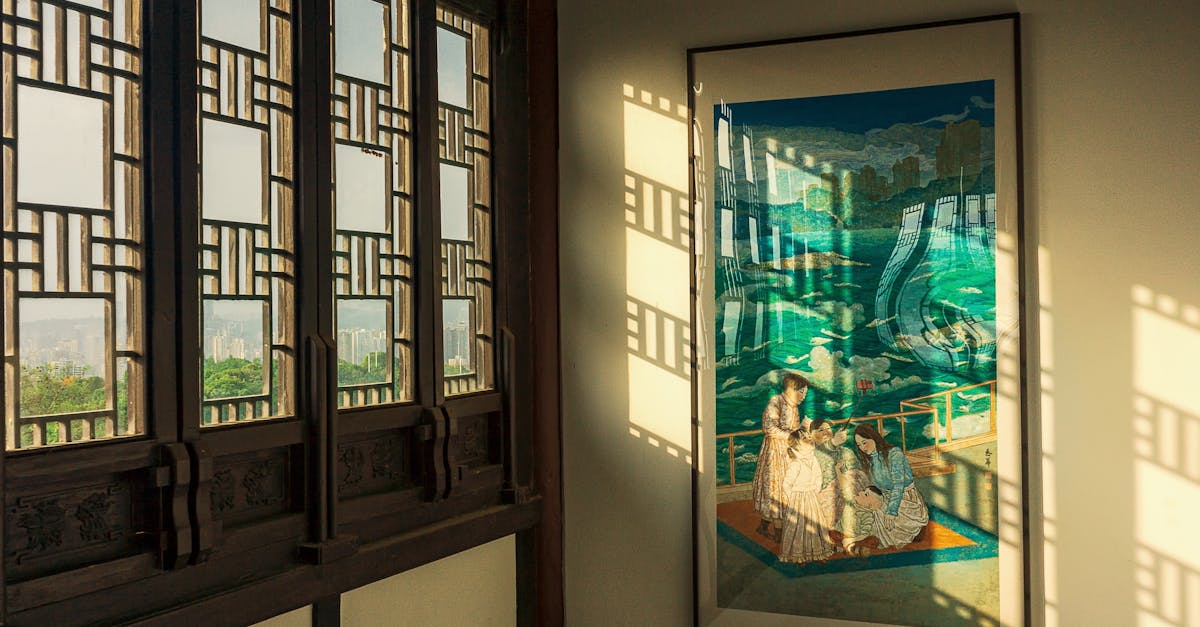This article delves into the evolving trends of adaptive painting tailored for adjustable spaces. As modern lifestyles demand flexibility, homes are designed to serve multiple functions. The need for multifunctional environments has led to innovative color palettes and painting techniques that transform spaces effortlessly. From integrating smart technology to enhancing aesthetic appeal, the article highlights how sustainable practices and innovative materials are pivotal. Discover how adaptive painting can elevate living areas by meeting contemporary needs while preserving style and functionality.
Current Trends in Home Painting and Remodeling
As homeowners seek to enhance their living environments, the world of home painting and remodeling is undergoing significant transformations. Tailored to meet the diverse needs of modern lifestyles, these trends focus on creating adaptable spaces that seamlessly blend aesthetics and functionality. The drive for flexibility in home design is compelling more individuals to rethink their spaces, fostering a demand for innovation in paint colors, application techniques, and remodeling materials.
With a growing emphasis on sustainable practices and multifunctional living areas, homeowners are now prioritizing solutions that not only elevate their decor but also accommodate various aspects of daily life. This includes the integration of smart technology and ergonomic designs that allow for smooth transitions between work, relaxation, and wellness. From vibrant hues that inspire creativity to minimalist aesthetics that promote tranquility, the current trends reflect a desire for spaces that are both visually appealing and conducive to modern living.

| Feature | Details |
|---|---|
| Multifunctional Color Palettes | Colors that adapt to different moods and functions, ranging from calming tones for relaxation to vibrant hues for productivity. |
| Smart Paint Technology | Paints that change color with temperature or light levels, enhancing the adaptability of spaces throughout the day. |
| Textured Finishes | Innovative textures that create depth and visual interest while serving practical purposes like hiding imperfections. |
| Eco-Friendly Options | Green paints made from natural materials, ensuring both beauty and sustainability in home environments. |
| Rapid Application Techniques | Methods such as spray painting and roll-on options that allow for quick changes, catering to evolving decor styles. |
| Accent Walls | Strategically painted walls that can define zones in a multifunctional space, improving both aesthetics and functionality. |
| Collaborative Spaces | Use of colors and finishes to create inclusive environments that cater to diverse needs, such as work and relaxation. |
Current Trends in Home Painting and Remodeling
As homeowners look to refresh their living environments, the world of home painting and remodeling continually evolves. Contemporary trends emphasize adaptability, sustainability, and aesthetics that double as functional enhancements. These concepts incorporate multi-purpose areas within homes, providing homeowners the flexibility to tailor their spaces based on their holistic lifestyle needs. This guide will delve into the latest painting and remodeling trends, showcasing popular colors, innovative techniques, and materials that can elevate any home design.
The Shift Towards Adaptive Home Design
With modern lifestyles in flux, home designs are increasingly prioritizing flexibility and adaptability. Traditional layouts that separate work, leisure, and relaxation are giving way to multi-functional environments. The ability to transform spaces based on various needs is becoming paramount.
Popular Paint Colors for 2023
Color selection plays a critical role in the mood and functionality of a home. The following palettes have emerged as favorites among homeowners this year:
- Earthy Tones: Shades like terracotta, olive green, and sandy beige bring the calmness of nature indoors, creating a warm environment perfect for relaxed living.
- Soft Pastels: Gentle shades of pale pink, mint green, and baby blue add an air of tranquility and charm, transforming spaces into serene retreats.
- Bold Accents: Deep jewel tones like emerald green, sapphire blue, and rich burgundy serve as powerful accent colors that can determine focal points within a room.
Techniques of Application and Finish Styles
Paint application techniques are evolving to enhance both aesthetics and functionality. Homeowners are experimenting with new styles that create visually captivating designs while also being practical:
- Textured Paint: Products that mimic materials like stone, wood, or fabric add depth and dimension to walls.
- Ombré Effects: A gradient effect is gaining popularity for creating unique visual flair on accent walls, offering a streamlined look that catches the eye.
- Smart Paints: Incorporating smart paints that adapt to lighting conditions can change a room’s ambiance with the day’s mood, reflecting modern technological integration.
Multifunctional Furniture Enhancements
With the growing trend toward adaptive living spaces, multifunctional furniture has become indispensable. These innovative solutions help maximize space efficiency:
- Convertible Sofas: Sofas that transform into beds for guests are crucial for optimizing space in smaller homes.
- Foldable Desks: Ideal for work-from-home setups, these desks can be tucked away when not in use, freeing valuable floor space.
- Modular Shelving Units: These versatile designs allow homeowners to customize storage solutions as per their evolving needs.
Incorporating Health and Wellness Features
As more individuals prioritize health and wellness, incorporating fitness areas into homes has become more common. Adaptive spaces now include:
- Compact Workout Zones: Clutter-free corners dedicated to exercise with space for essentials like yoga mats and weights enhance wellness without overwhelming the home.
- Dedicated Meditation Corners: Quiet spaces with calming decor and colors promote relaxation and mindfulness.
Smart Technology in Home Design
Smart home technology is revolutionizing how living spaces function. Homeowners now seek automated features that enhance both convenience and adaptability:
- Voice-Controlled Furniture: Smart couches that adjust at the command of voice help ensure comfort while maintaining an uncluttered aesthetic.
- Adjustable Lighting Systems: Lighting that adapts to the time of day significantly improves atmosphere and functionality in any space.
- Retractable Dividers: Room partitions that can be opened or closed on demand provide added flexibility and privacy.
Sustainable and Eco-Friendly Options
Sustainability is at the forefront of modern home improvements. Homeowners are increasingly opting for eco-friendly materials and designs, including:
- Recycled Materials: Utilizing reclaimed wood for furniture and fixtures reflects a commitment to sustainability.
- Energy-Efficient Appliances: Investing in appliances that lower energy consumption not only benefits the environment but reduces utility bills.
- Biophilic Elements: Integrating nature within home designs—like indoor plants—promotes health and well-being.
The Role of Modular Architecture
Modular design offers practical solutions for modern living. By utilizing flexible structures, homeowners can:
- Movable Walls: Allow for room reconfiguration based on current needs, supporting an adaptive lifestyle.
- Retractable Partitions: Create multifunctional spaces that seamlessly transition from one use to another.
Strategies for Storage in Small Adaptive Spaces
Maximizing storage is essential for any adaptive home design. Particularly in urban settings, smart storage can enhance functionality:
- Hidden Compartments: Integrated storage solutions within furniture help keep spaces organized and clutter-free.
- Under-Bed Storage: Utilizing underutilized spaces beneath beds for storage solutions optimizes available room without compromising aesthetics.
Accommodating Multigenerational Living
With multigenerational households becoming more common, adaptive living spaces must cater to diverse needs:
- Privacy Zones: Creating distinct areas to ensure privacy for various family members promotes harmony.
- Shared Spaces: Designing communal areas that encourage family bonding enhances well-being.
Transforming Outdoor Spaces
Outdoor areas are increasingly being viewed as extensions of the home. The latest trends include:
- Convertible Patios: Outdoor spaces that transition from cozy lounges to dining areas.
- Rooftop Gardens: Urban homes benefit from cultivating green spaces that enhance the living experience.
Combining Aesthetic Appeal with Functionality
Modern adaptive living spaces strive to create visually pleasing environments. Important aspects include:
- Minimalist Aesthetics: Clean lines and simplicity enhance both beauty and practicality.
- Neutral Palettes: Soft colors lend a sense of calm while serving as a versatile backdrop for accent pieces.
- Natural Materials: Using elements such as wood, stone, and textiles bring warmth and texture to living spaces.
Considering Tiny Homes and Urbanization
Tiny homes epitomize adaptive living, showcasing how efficiency can determine design choices:
- Lofted Beds: This clever option frees up floor space for other activities, maximizing usability in compact areas.
- Collapsible Furniture: Easy-to-store pieces allow for flexibility in tight living quarters while maintaining comfort.
As urban areas grow denser, the demand for adaptable solutions tailored to small living spaces is more vital than ever.
The Future of Adaptive Living Spaces
Looking ahead, adaptive home designs are expected to evolve further, becoming even more customizable and tech-driven. Sustainability will remain a core consideration, ensuring homes reflect both modern needs and a commitment to the future.
The integration of smart solutions, multifunctionality, and eco-friendly practices highlights a shift towards efficient, beautiful living spaces that are ready for any lifestyle. Embracing these latest trends will not only enhance a home’s functionality but also contribute to a more sustainable and enjoyable living environment.

Transform Your Home Into a Multifunctional Space
Unlock the potential of your living environment with our expert painting and remodeling services. Enhance your home’s adaptability while enjoying a fresh and vibrant aesthetic. Contact us today to discover how we can help you create the ultimate space that suits your lifestyle!
Current Trends and Tips in Home Painting and Remodeling
Popular Color Trends
When considering a fresh look for your home, the choice of colors plays a crucial role. Current trends emphasize soothing palettes and bold accents to create inviting spaces.
- Earthy Tones: Consider using browns, greens, and terracotta shades to bring a sense of warmth and nature indoors.
- Bold Accent Walls: Introduce a striking color or pattern on one wall to create a focal point in a room.
- Pastels and Soft Hues: Light colors like pale pinks and blues are gaining popularity for a calming effect.
- Monochromatic Schemes: Employ various shades of a single color for a sophisticated and cohesive look.
Innovative Painting Techniques
Beyond color choices, the method of application can transform any space dramatically. Here are some techniques that are trending:
- Textured Finishes: Incorporate textures like stucco or sponged effects to add depth and interest to walls.
- Ombre Effects: Gradually blend two or more colors for a unique and vibrant appearance.
- Stenciling: Use stencils to create intricate designs that personalize your space.
Adaptable and Multifunctional Spaces
Modern living spaces are becoming more flexible and multifunctional to cater to diverse needs.
- Home Office Integration: Designate areas in your home that can easily transform into workspaces.
- Fitness Zones: Create compact workout areas with essential equipment for at-home fitness activities.
- Outdoor Living: Expanding living spaces to include patios or gardens that can serve multiple purposes.
Sustainable Materials and Practices
Eco-friendly options are not only a trend but a responsibility; they enhance both home value and environmental impact.
- Recycled Materials: Utilize paints and materials made from recycled resources to reduce waste.
- Energy-efficient Options: Opt for energy-efficient appliances and lighting solutions that complement painted zones.
- Biophilic Design: Incorporate natural elements and indoor plants to enhance wellness and connection to nature.
Frequently asked questions
Glossary of Key Terms Related to Home Painting and Remodeling
- Adaptive Design
- A flexible approach to home layout that accommodates multiple functions and changing needs, allowing for versatile living spaces.
- Multifunctional Furniture
- Furniture designed to serve multiple purposes, such as convertible sofas and foldable desks, maximizing space efficiency.
- Home Office
- A dedicated workspace integrated into the home, designed for productivity, often featuring ergonomic furniture and technology.
- Wellness Zones
- Areas within the home focused on health and relaxation, such as compact workout spaces, meditation corners, and spa-like bathrooms.
- Smart Technology
- Devices and systems that enhance home functionality, including automation for lighting, temperature, and appliances, promoting convenience.
- Sustainable Design
- An approach that uses eco-friendly materials and practices, focusing on energy efficiency and reducing environmental impact.
- Modular Architecture
- A construction style that emphasizes flexibility and easy modifications, utilizing movable walls and extensions to adapt spaces.
- Storage Solutions
- Innovative ways to maximize storage in small or adaptive spaces, such as under-bed storage and built-in shelving units.
- Outdoor Living Spaces
- Areas designed for relaxation and entertainment outside the home, which may include convertible patios and garden setups.
- Urbanization
- The process of population growth in urban areas, influencing the need for compact, adaptable living environments in cities.
Adaptive Painting: Trends for Adjustable Spaces highlights the significance of embracing flexibility and multifunctionality in home design. As modern living requires homes to serve various purposes, innovative painting techniques and color choices play a crucial role in creating adaptable environments. By incorporating techniques that enhance versatility, homeowners can effortlessly transition their spaces to meet changing needs. The highlighted trends underscore the importance of a thoughtful approach to design and encourage the integration of adaptive strategies in residential spaces.
Color Schemes for Versatility
Choosing the right color palette is essential for creating an adaptive living space. Consider the following recommendations to enhance versatility:
- Neutral Base Colors: Use soft, neutral tones like beige, gray, or off-white as a base to create a calm backdrop that adapts well to accent colors.
- Accent Walls: Introduce bold accents or removable wallpaper to inject personality without overwhelming the area. This allows for easy updates as preferences change.
- Layering Colors: Implement layered color techniques, such as painting furniture or trim in complementary shades, to add depth.
Innovative Painting Techniques
Explore unique painting methods that add functionality and aesthetic appeal to adaptable spaces:
- Chalkboard and Whiteboard Paint: Incorporate these fun finishes in home offices or kitchens for a practical, interactive element.
- Textured Finishes: Use techniques like sponging or rag rolling to create texture that adds dimension and warmth to a room without limiting adaptability.
- Magnetic Paint: Create surfaces that allow for the use of magnets, perfect for displaying notes in home offices or family organization areas.
Materials for Sustainability
Choosing eco-friendly materials is crucial in modern design. Consider the following when selecting paints and finishes:
- Low-VOC and Zero-VOC Paints: Opt for paints that are low in volatile organic compounds to improve indoor air quality.
- Natural and Recycled Materials: Seek paints made from natural ingredients or recycled components to contribute to sustainability.
- Biophilic Elements: Incorporate earthy tones inspired by nature to create a calming atmosphere while promoting a connection to the outdoors.
Transform Your Home Today!
Unlock the potential of your living spaces with our expert painting and remodeling services. Experience a boost in the aesthetics and functionality of your home while enjoying the benefits of a personalized design that reflects your style and meets your needs. Contact us now for a consultation!
Sophia Torres is the creative mind behind the most dazzling transformations at TS Painting & Restoration. With a strong background in interior design and a deep passion for tropical color palettes, she has helped hundreds of clients revitalize their spaces into vibrant and inviting environments. Born in Colombia and raised in Florida, Sophia brings a unique perspective to her work, blending Latin American influences with modern design trends.
Sophia’s vision of color goes beyond the conventional. She is known for her ability to create bold and unexpected combinations that reflect Florida’s natural beauty. Her focus on color psychology and strategic use of tones allows her to transform any environment, making each project a showcase of her clients’ personal style. On her blog, she shares practical tips on how to choose colors that not only beautify but also enhance emotional well-being and create harmony in the home.
When not working, Sophia enjoys exploring art galleries, experimenting with DIY projects, and finding inspiration in Florida’s lush landscapes. For her, design isn’t just about aesthetics; it’s about creating spaces that tell a story, reflect the identity of those who live there, and evoke positive emotions. At TS Painting & Restoration, Sophia is committed to helping homeowners discover how colors can transform their homes into true havens of tranquility and beauty.


